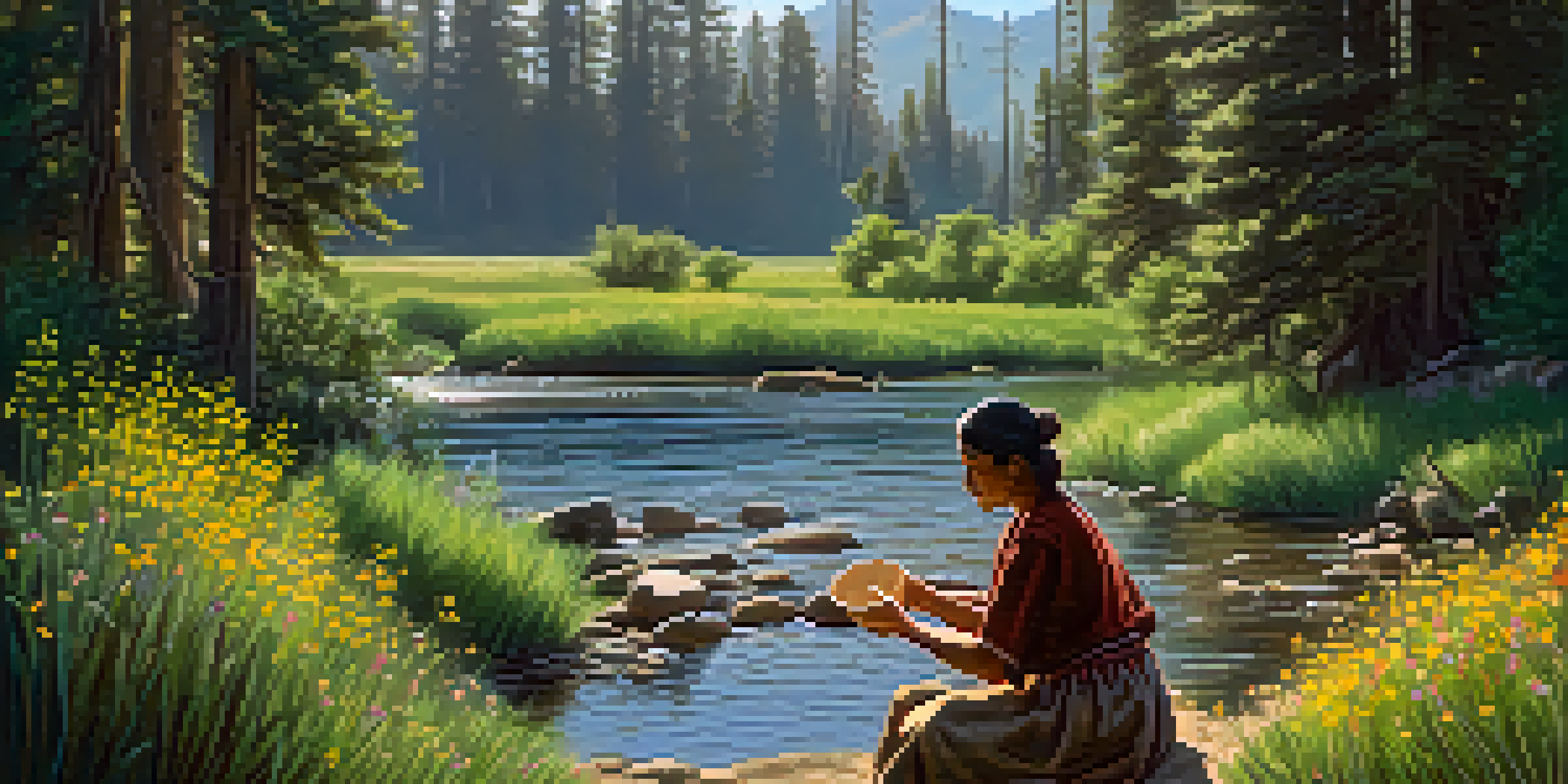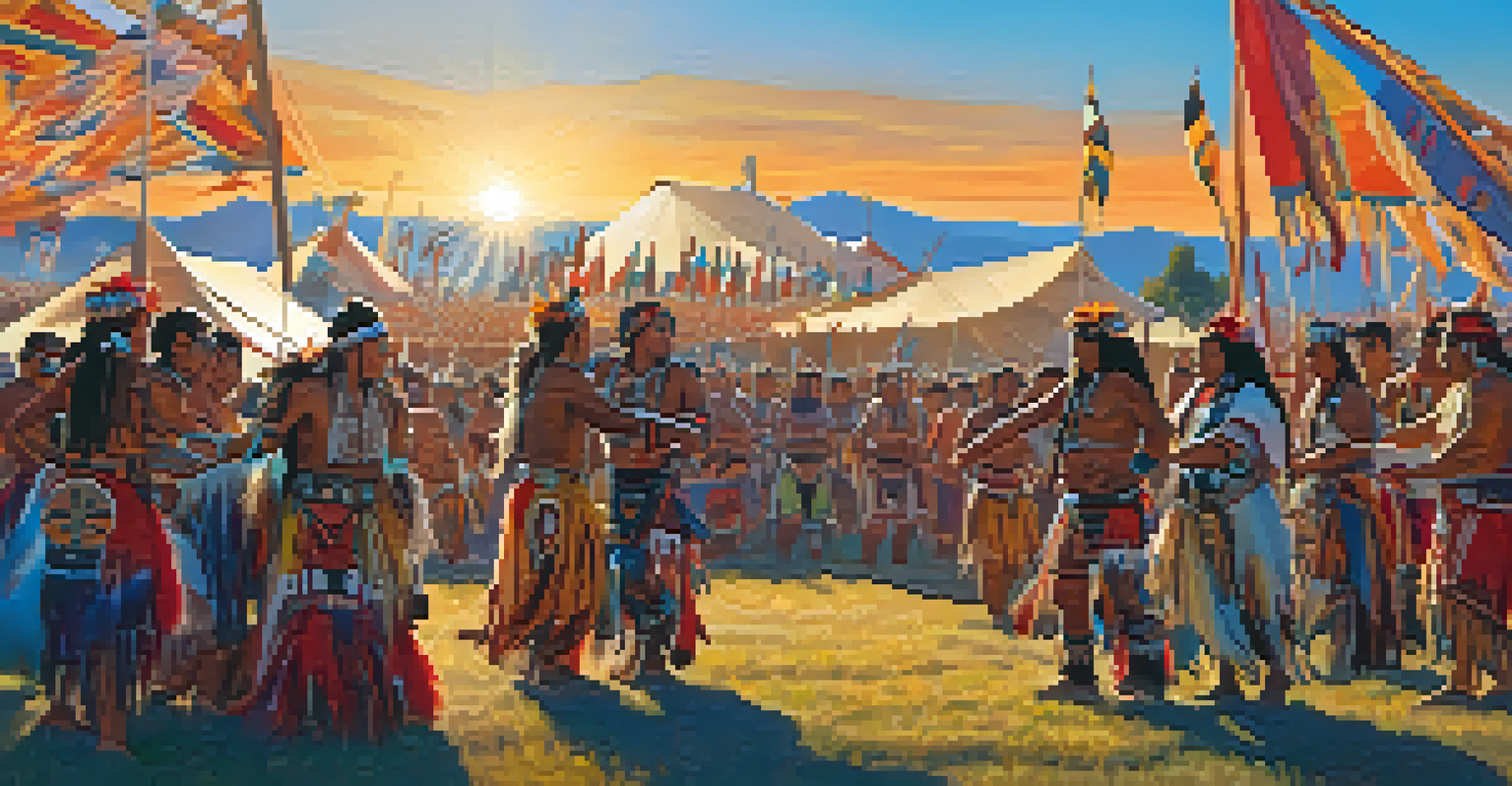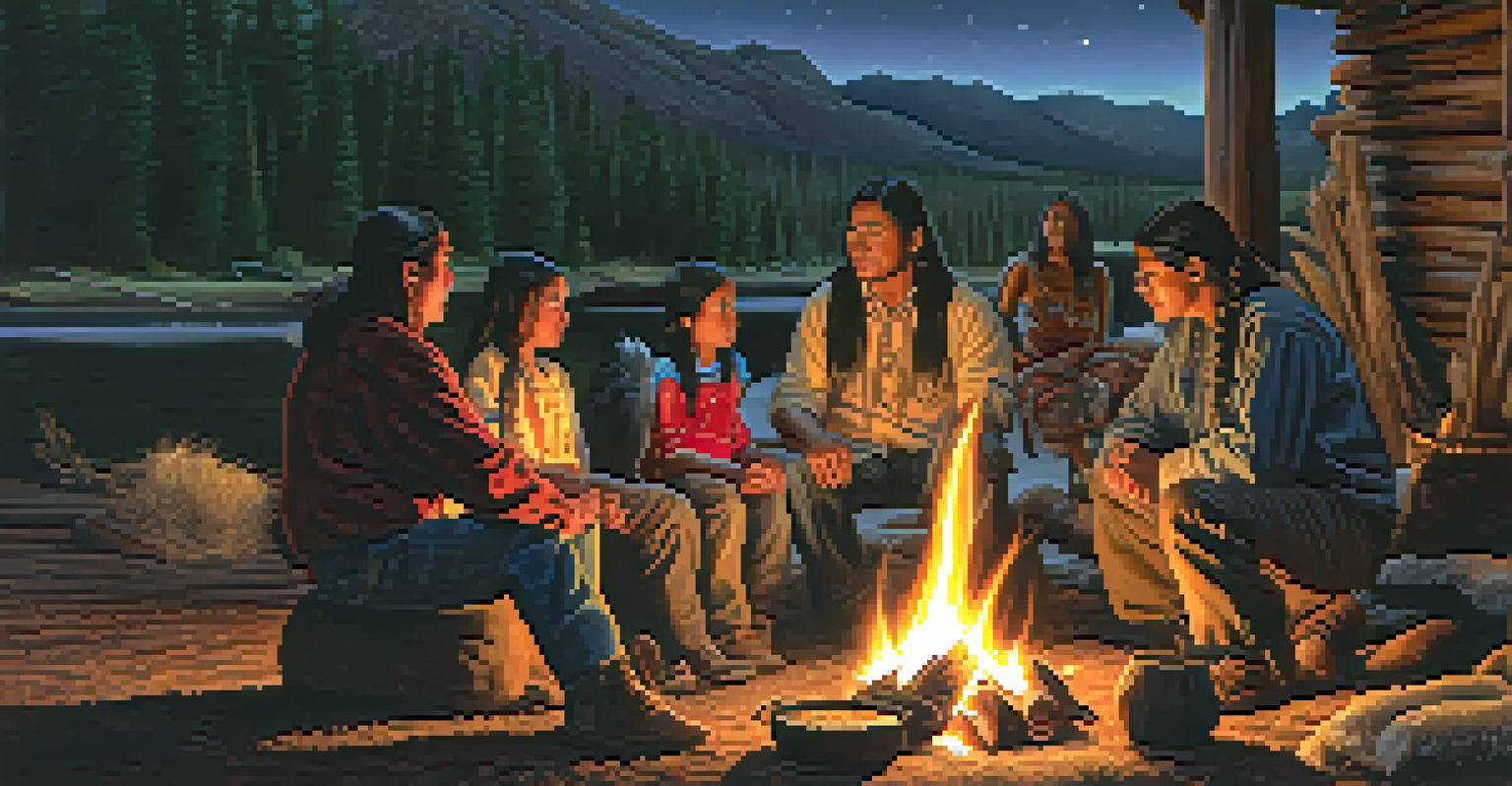Exploring California's Native American Tribes and Their Cultures

An Overview of California's Native American Tribes
California is home to a rich tapestry of Native American tribes, each with its own unique culture and history. There are over 100 distinct tribes in the state, including the Yurok, Chumash, and Miwok, each contributing to California's cultural diversity. These tribes have thrived for thousands of years, showcasing a deep connection to the land and its resources.
The land is sacred. It is the source of our life and our identity.
The tribes vary significantly in language, traditions, and lifestyles, influenced by their geographical locations. For example, coastal tribes like the Chumash relied heavily on the ocean for sustenance, while those in the Sierra Nevada, such as the Washoe, were more focused on hunting and gathering in the mountainous terrains. This diversity highlights the adaptability and ingenuity of Native American cultures.
Understanding these tribes is crucial not just for appreciating their contributions to history but also for recognizing their ongoing presence and influence in California today. Many tribes continue to preserve their traditions and advocate for their rights, demonstrating resilience and strength in the face of challenges.
The Spiritual Connection to the Land
For California's Native American tribes, the land is not merely a resource; it is a sacred entity entwined with their identity and spirituality. Many tribes believe that all elements of nature—mountains, rivers, and even the air—are alive and imbued with spirit. This belief fosters a deep respect for the environment and emphasizes the importance of sustainability.

Rituals and ceremonies often revolve around the changing seasons and natural cycles. For instance, many tribes hold ceremonies to honor the first harvest or to give thanks for bountiful hunting seasons. These practices not only connect them to their ancestors but also reinforce their responsibilities as stewards of the land.
Diverse Cultures of Native Tribes
California's Native American tribes each possess unique languages, traditions, and histories that reflect their deep connection to the land.
This spiritual connection also influences contemporary issues such as land rights and environmental protection. Tribes are often at the forefront of movements advocating for the preservation of sacred sites and natural resources, underscoring the relevance of their cultural beliefs in today’s world.
Language: The Heart of Cultural Identity
Language is a vital aspect of cultural identity among California's Native American tribes. Each tribe has its own language or dialect, which serves as a vessel for passing down traditions, stories, and values through generations. Unfortunately, many of these languages are endangered, with only a few fluent speakers remaining.
Language is the road map of a culture. It tells you where its people come from and where they are going.
Efforts are being made to revitalize these languages through educational programs and community initiatives. Tribes are teaching younger generations their native languages, often integrating them into cultural events and daily life. This revival not only fosters a sense of pride but also strengthens the community's bonds.
By learning and using their ancestral languages, tribes are preserving their unique worldviews and histories. Language revitalization is not just about words; it's about reclaiming identity and ensuring that the cultural heritage of these tribes continues to thrive.
Traditional Arts and Crafts: A Living Heritage
The traditional arts and crafts of California's Native American tribes are not just beautiful; they are deeply meaningful and serve as expressions of cultural identity. From intricate basket weaving to vibrant beadwork, these crafts often tell stories and convey important cultural symbols. Each piece is a testament to the skills and creativity passed down through generations.
Artisans often use natural materials sourced from their environments, such as grasses, feathers, and stones. This practice not only showcases their craftsmanship but also their connection to the land. For example, the Yurok tribe is known for its exquisite baskets, which are crafted from materials gathered from local rivers and forests.
Spiritual Land Connection
For these tribes, the land is sacred, fostering a respect for nature and driving contemporary advocacy for environmental protection.
In recent years, there has been a resurgence of interest in traditional arts, with many tribes hosting workshops and events to share their techniques with the wider community. This not only helps preserve these skills but also fosters appreciation for the rich cultural heritage that these arts represent.
Modern Challenges and Resilience
California's Native American tribes face numerous challenges, including land rights disputes, economic hardships, and cultural preservation issues. These challenges are often rooted in historical injustices, including colonization and forced displacement. However, resilience is a defining characteristic of these communities.
Many tribes are actively working to reclaim their lands and assert their rights, engaging in legal battles and forming coalitions. Their efforts are supported by broader movements advocating for Indigenous rights, which have gained momentum in recent years. This collective action highlights the strength and unity among Native American tribes.
Additionally, tribes are focusing on economic development through initiatives such as sustainable tourism and cultural education. By sharing their stories and traditions with the public, they not only generate income but also foster greater understanding and respect for their cultures.
Cultural Celebrations and Festivals
Cultural celebrations and festivals play a significant role in the lives of California's Native American tribes, serving as vital expressions of identity and community. Events such as powwows, dances, and harvest festivals are not only occasions for celebration but also opportunities for cultural exchange and education. These gatherings draw people from various tribes and backgrounds, fostering unity and understanding.
During these celebrations, traditional music, dance, and food come together, creating an immersive cultural experience. For instance, the Big Time festivals held by various tribes often feature traditional dancers adorned in colorful regalia, showcasing the vibrancy of their cultures. These events help to keep traditions alive while also engaging younger generations.
Resilience Amid Modern Challenges
Despite facing historical injustices and economic hardships, California's Native tribes are actively reclaiming their rights and revitalizing their cultures.
Moreover, these festivals serve as platforms for advocacy and awareness, addressing contemporary issues affecting Native communities. By inviting the public to participate, tribes can share their stories and educate others about their heritage, building bridges between cultures and promoting mutual respect.
The Future of California's Native American Tribes
As we look to the future, California's Native American tribes continue to navigate the complexities of modern society while striving to preserve their rich cultures. There is a growing emphasis on cultural revitalization, with many tribes investing in education and community programs that promote tribal history and traditions. This commitment to cultural continuity is essential for the survival of their identities.
Collaborations between tribes and educational institutions are also gaining traction, allowing for the integration of Native American perspectives into curricula. This not only benefits Native students but also enriches the educational experience for all students, fostering a greater understanding of the diverse cultures that shape California.

Ultimately, the future of California's Native American tribes lies in their ability to adapt while remaining rooted in their traditions. By embracing innovation and building alliances, they are crafting a narrative that honors their past while looking forward to a vibrant future.